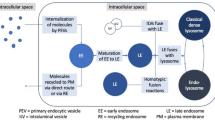Abstract
The transcription factor AP-1 plays an important role in cellular proliferation, transformation and death. In this study, we report a novel human gene, AC3-33 (GenBank name: c3orf33, FLJ31139), which encodes a secretory protein that can inhibit Elk1 transcriptional activity via ERK1/2 pathway. The AC3-33 mRNA encodes a protein of 251 amino acids, which is a classical secretory protein. Functional investigation reveals that overexpression of AC3-33 significantly inhibit AP-1 activity and DNA-binding ability. Further investigation indicated that overexpression of AC3-33 significantly inhibit transcriptional activity of Elk1 and c-jun, but not c-fos. As for the upstream of signaling pathway of Elk-1, our study demonstrated that overexpression of AC3-33 significantly down-regulates phosphorylation of ERK1/2, but not JNK/SAPK or p38 MAPK. These results clearly indicate that AC3-33 is a novel member of the secretory family and inhibits Elk1 transcriptional activity via ERK1/2 MAPK.





Similar content being viewed by others
Abbreviations
- MAPK:
-
Mitogen-activated protein kinase
- MAPKK, MKK or MEK:
-
MAPK kinase
- MEKK:
-
MAPKK kinase or MEK kinase
- PMA:
-
Phorbolmyrlstate acetate
- AP-1:
-
Activation protein 1
- DMEM:
-
Dulbecco’s modified Eagle’s medium
- ERK:
-
Extracellular signal regulated protein kinase
- Elk1:
-
The ETS-domain transcription factor
References
He PF, Peng Z, Luo Y, Wang L, Yu P, Deng WW, An YQ, Shi TP, Ma DL (2009) High-throughput functional screening for autophagy-related genes and identification of TM9SF1 as an autophagosome-inducing gene. Autophagy 5:52–60
Ma X, Wang X, Gao X, Wang L, Lu Y, Gao P, Deng W, Yu P, Ma J, Guo J, Cheng H, Zhang C, Shi T, Ma D (2007) Identification of five human novel genes associated with cell proliferation by cell-based screening from an expressed cDNA ORF library. Life Sci 81:1141–1151
Angel P, Karin M (1991) The role of Jun, Fos and the AP-1 complex in cell-proliferation and transformation. Biochim Biophys Acta 1072:129–157
Young MR, Li JJ, Rincón M, Flavell RA, Sathyanarayana BK, Hunziker R, Colburn N (1999) Transgenic mice demonstrate AP-1 (activator protein-1) transactivation is required for tumor promotion. Proc Natl Acad Sci USA 96:9827–9832
Li JJ, Westergaard C, Ghosh P, Colburn NH (1997) Inhibitors of both nuclear factor-kappaB and activator protein-1 activation block the neoplastic transformation response. Cancer Res 57:3569–3576
Bode AM, Dong Z (2000) Signal transduction pathways: targets for chemoprevention of skin cancer. Lancet Oncol 1:181–188
Eferl R, Wagner EF (2003) AP-1: a double-edged sword in tumorigenesis. Nat Rev Cancer 3:859–868
Liu P, Deng WW, Gao P, Lu Y, Sun B, Li M, Zhao J, Shi TP, Zhang XJ (2008) Molecular cloning and preliminary function study of a novel human gene AC3-33 related to suppress AP-1 activity. Yi Chuan (Chinese) 30:575–582
Ma X, Zhao HS, Shan JX, Long F, Chen YY, Chen YY, Zhang YM, Han X, Ma DL (2007) PDCD10 interacts with Ste20-related kinase MST4 to promote cell growth and transformation via modulation of the ERK pathway. Mol Biol Cell 18:1965–1978
Qi M, Elion EA (2005) MAP kinase pathways. J Cell Sci 118:3569–3572
Su B, Karin M (1996) Mitogen-activated protein kinase cascades and regulation of gene expression. Curr Opin Immunol 8:402–411
Yang S-H, Sharrocks AD, Whitmarsh AJ (2003) Transcriptional regulation by the MAP kinase signaling cascades. Gene 320:3–21
Andrea CB, Bin Z (2007) Receptor-mediated protein transport in the early secretory pathway. Trends Biochem Sci 32:381–388
Apweiler R, Hermjakob H, Sharon N (1999) On the frequency of protein glycosylation, as deduced from analysis of the SWISS-PROT database. Biochim Biophys Acta 1473:4–8
Gallo A, Cuozzo C, Esposito I, Maggiolini M, Bonofiglio D, Vivacqua A, Garramone M, Weiss C, Bohmann D, Musti AM (2002) Menin uncouples Elk-1, JunD and c-Jun phosphorylation from MAP kinase activation. Oncogene 21:6434–6445
Yang SH, Sharrocks AD (2006) Convergence of the SUMO and MAPK pathways on the ETS-domain transcription factor Elk-1. Biochem Soc Symp 73:121–129
Cobb MH (1999) MAP kinase pathways. Prog Biophys Mol Biol 71:479–500
Turnier C, Hess P, Yang DD, Xu J, Turner TK, Nimnual A, Bar SD, Jones SN, Flavell RA, Davis RJ (2000) Requirement of JNK for stress-induced activation of the cytochrome c-mediated death pathway. Science 288:870–874
Karin M (1998) Mitogen-activated protein kinase cascades as regulators of stress responses. Ann N Y Acad Sci 851:139–146
Pearson EJ, Wilsbacher G, Swantek J, Karandikar J, Xu M, Cobb MH (1999) New insights into the control of MAP kinase pathways. Exp Cell Res 253:255–270
Chang L, Karin M (2001) Mammalian MAP kinase signalling cascades. Nature 410:37–40
Huang J, Shi T, Ma T, Zhang Y, Ma X, Lu Y, Song Q, Liu W, Ma D, Qiu X (2008) CCDC134, a novel secretory protein, inhibits activation of ERK and JNK, but not p38 MAPK. Cell Mol Life Sci 65:338–349
Simonsen A, Tooze SA (2009) Coordination of membrane events during autophagy by multiple class III PI3-kinase complexes. J Cell Biol 186:773–782
Fadeel B, Xue D (2009) The ins and outs of phospholipid asymmetry in the plasma membrane: roles in health and disease. Crit Rev Biochem Mol Biol 44:264–277
Söderberg SS, Karlsson G, Karlsson S (2009) Complex and context dependent regulation of hematopoiesis by TGF-beta superfamily signaling. Ann N Y Acad Sci 1176:55–69
Acknowledgments
This work was supported by grants from the National Natural Science Foundation of China (30671092), the National High Technology Research and Development Program (863 Program) of China (2006AA02A305), the Natural Science Foundation of Hebei Province (C2009001260), the Central Public-Interest Scientific Institution Basal Research Fund (2009GJSSJKB03), and the Key National S&T Program—“Major New Drug Development” (2009ZX09503-004).
Author information
Authors and Affiliations
Corresponding authors
Additional information
Dongxia Hao, Peng Gao contributed equally to this work.
Rights and permissions
About this article
Cite this article
Hao, D., Gao, P., Liu, P. et al. AC3-33, a novel secretory protein, inhibits Elk1 transcriptional activity via ERK pathway. Mol Biol Rep 38, 1375–1382 (2011). https://doi.org/10.1007/s11033-010-0240-x
Received:
Accepted:
Published:
Issue Date:
DOI: https://doi.org/10.1007/s11033-010-0240-x




